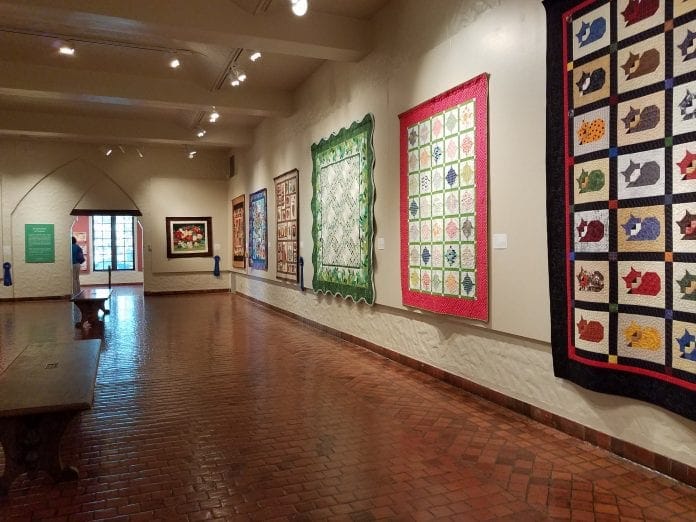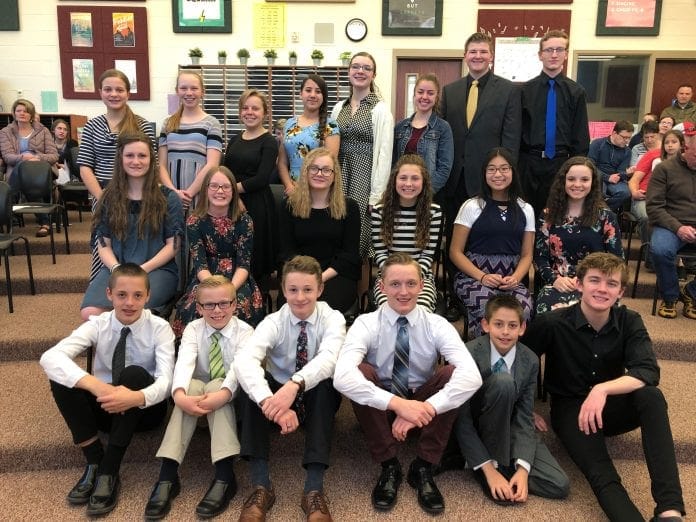Quilting isn’t hard; just exacting

r WOODLAND HILLS – Utah has a kinship with quilting because the pioneer spirit resonates in the state that was settled less than 170 years ago, a quilting expert says.
Quilting events throughout Utah County this summer showcase the hours and hours of work women – and men – put into quilted bed-coverings and wall-hangings.
“Quilting is international,” Barbara Walsh of Woodland Hills told Serve Daily. Walsh, a quilter for more than 40 years, retired now from teaching high school English, helped teach Utah Quilt Judge’s Certifications programs and has won many quilting awards.
“I like to go to quilt shows all over the country,” Walsh continued. “There is a lot of quilting here and part of that is because of heritage.”
History
Quilting is big everywhere, and has been since the [nation’s] Bicentennial in the 1970s, Walsh said.
“Right before the Bicentennial, Good Housekeeping magazine had a Great American Quilt quilting contest,” the Woodland Hills resident continued. “I remember it well. There was a quilt of the Statue of Liberty …. The state [Quilters] Guild was started in 1977 by women who said, ‘We want everyone to be welcome,’ and that has carried through all areas of the state.”
A quilt is defined as a covering with three parts: top, center stuffing and back, with the three parts stitched together so the stuffing doesn’t shift.
“I remember sleeping in what used to be an unheated garage,” Debbie Lyke of Spanish Fork told Serve Daily. “We’d pile all the coats we could on top of us to get warm, and then someone gave Mother a quilt made out of worn blue jeans.
“It was pretty old and thin, but it was a lot better than coats that kept sliding off all night long,” Lyke continued. “We put it on top, to hold the coats in place.”
Quilts might have started as utilitarian – large blocks of used material recycled into strips that were then sewn together until they were bed-size – but by the mid-1800s they began in some cases to be seen as a creative project that filled in hours and days on the lonely prairies of the nation’s heartland.
Women would stitch the top and take it to a communal day-long quilting bee, where all the women would chatter as they quilted the three layers together for each of their quilts.
The Utah Quilt Show at the Springville Museum of Art, ongoing until Sept. 23, shows how the craft of quilt-making has become an art form. While some are fairly traditional sections of blocks sewn together, others are scenes that inspire, such as the sun setting over the Grand Canyon.
“In the 1830s to 1850s, most of the quilting was done with the material they had on hand,” Walsh said. “Beautiful quilts were for those with money. … We live in a much more affluent time now.”
Technique
Patty Royal of Phoenix, in town to visit her family, toured the Utah Quilt Show on July 29. Though she claimed to not be an expert, she explained what judges look for in a quality quilt.
“If it isn’t perfectly cut out and sewn together, it will not lay flat,” Royal said. “It will pucker and you can see the mistakes.
“It is very meticulous, hard work and it takes a tremendous amount of time,” the Phoenix resident continued. “It takes a good eye, precision work and experience to have a quilt that becomes a winner.”
Royal suggested people new to quilting “keep it simple.” She suggested a box pattern, or triangles – but take care to include the very tip of the triangle, or it will be disqualified in competition.
Walsh added that an otherwise quality quilt that had gotten dirty also would be disqualified.
The Maple Mountain Quilters is the South Utah County chapter of the Utah Quilt Guild. The 40 members meet at 10 a.m. the first Wednesday of each month at the Corn Wagon Quilt Store, 303 East 400 South in Springville. Activities include quilt classes, show and tell, swaps and treats. For more information contact Jane at ronjg7@msn.com.








